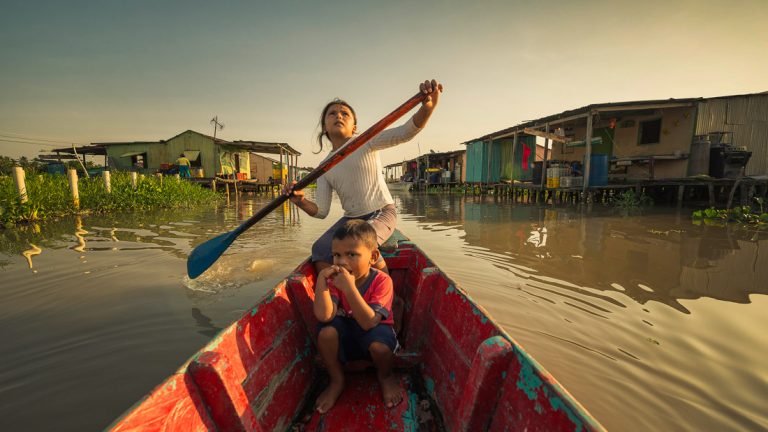
‘Once Upon a Time in Venezuela’: Venezuela’s Oscars Candidate is a Compelling (and Frustrating) Documentary
05 February, 2021Mother Earth has reached her breaking point: the current pandemic is just another sign that humanity, as it exists today, is no longer sustainable. Sadly, this is all to evident in the once bustling Venezuelan village, Congo Mirador, where homes are inches away from drowning in murky water, snakes, and oil-drenched turtles. Nearly all of its inhabitants have fled. The dire situation is inescapable without earnest intervention via dredging and environmental protections, but help is not on its way (the government can care less). This tragic plight is explored in Once Upon a Time in Venezuela (2020), the first full-length documentary by director Anabel Rodríguez Ríos (The Barrel, 1, 2 y 3 Mujeres, Shaping The Public), which debuted at Sundance, and is Venezuela’s official selection for the Best Foreign Film category of the 2021 Oscars.
For seven years, Rodríguez Ríos followed the residents of the once close-knit village, chronicling their desperate attempts to save the community. She does an excellent job in selecting who to follow. The compelling cast of characters includes the bird-loving elderly gentleman warbling songs of love, loss, and longing and the prideful but profoundly kind teacher, Natalie, fighting to keep the tiny, stilt high, school alive for the remaining children (including her daughter), even using her own income to keep it afloat (sadly, no pun intended). There’s the wheelin’ and dealin’, Hugo Chávez lovin’ Ms. Villasmil, a camera-hungry organiser attempting to stoke her own revolution (she leaves the viewer pondering if she’s a part of the solution or the problem).
Sensitively shot, even amidst the towering sediment water, the documentary’s cinematography is visual poetry, particularly the cherubic children who are incredibly resourceful and independent, paddling around their overrun village the way city kids ride bikes. (Note: Lost girlhood is another compelling, unnerving, and lightly developed narrative in the documentary. Little girls are forced to model and parade in front of a clapping heard of adult men and teenage boys. Sadly, beauty in Venezuela is the one industry available to women and girls with very few options). With these multiple miseries to address, the film is undeniably important and compelling, however, due to the fly-on-the-wall style it utilises, it’s equally frustrating.
The frustration arrives when it becomes clear, about thirteen minutes in, that the audience is expected to understand what brought the village to this dire state without ever being told. Subjects are never introduced. The dark political time Venezuela is experiencing requires—and deserves—unpacking, particularly in a film that clocks 90 minutes, but that never occurs. A myriad of questions goes unanswered. When did the oil companies begin destroying the village? When did the migration out of the village begin? Have health conditions arose? A viewer with no prior knowledge of Venezuela’s political turmoil or Congo Mirador’s history, is left to piece together clues from the photogenic villagers and extensively google after the film is over.
Though the film does leave you invested in the lives of the complicated last inhabitants, the documentary is far too focused on painting a gloomy pretty picture than telling the story. The truth can be revealed in the humdrum of everyday life, but it becomes a challenge when the mundane, not storytelling, is the bulk of what we get.
Click here to see upcoming screenings of Once Upon a Time in Venezuela.
See below to watch director Anabel Rodríguez Ríos introducing her film.
Follow Sounds and Colours: Facebook / Twitter / Instagram / Mixcloud / Soundcloud / Bandcamp
Subscribe to the Sounds and Colours Newsletter for regular updates, news and competitions bringing the best of Latin American culture direct to your Inbox.

